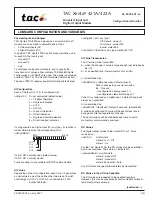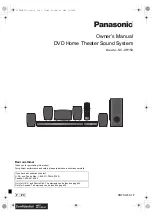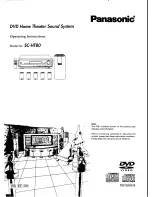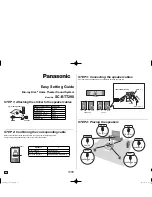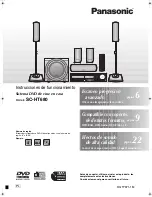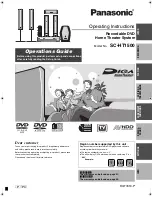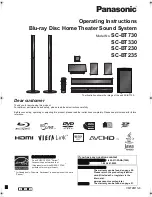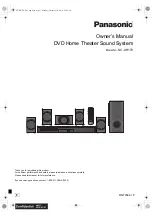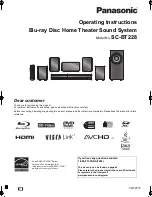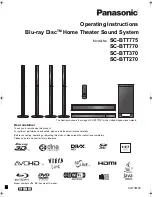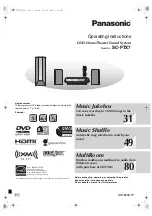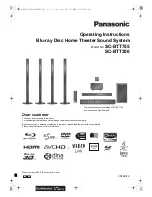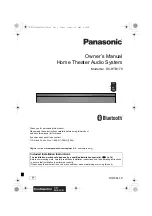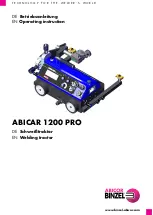
3.
Join the absorber:
Remove the tape holding the “floating” inlet and outlet
compression unions in the collector. Allow the unions to
be out exactly to their ends so the absorber is properly
aligned in the collector.
NOTE: 90
0
compression unions are supplied to allow
close fitting feed and return holes and can replace the
straight ones supplied for shipping.
Align the four absorber unions. Place pipe sealer on the
joining surfaces of the union. Taking two medium sized
crescent wrenches (or open-end wrench or combination)
thoroughly tighten the unions being sure to keep the
absorber sections laying flat. (The absorber has already
been pressure tested for leaks). Check that the “floating”
inlet and outlet lines are facing straight out their
respective holes, adjust as needed.
4
.
Neatly fold down and flatten the bent
absorber tabs so they cover the tubing and
union as much as possible.
5.
Install the Twin wall “Lexan” glazing:
Being very careful to keep the UV protected “Sun Side”
facing up. Carefully center the cover sheet side to side.
Place the rough-cut end of the “Lexan” into its slot in the
aluminum mullion. This will take some care and possibly
some force. The “Lexan” is tough so don’t worry about
breaking it. Bowing the cover sheet in the middle, place
the rounded finished end of the cover sheet in place in
the opposite aluminum mullion.
6.
Securing the Trim:
NOTE: Trim pieces have an EPDM seal already installed
on the inside bend. Place trim piece “A” in its place on
the “A” side. Using inward and downward force to
make a good seal, screw in the supplied color-coded 1/4”
hex head screws into the frame using the pre-located
spots on the trim. predrilled holes (14 total, 7 on either
side). Repeat for the “B” side. Collector is assembled.
COLLECTOR INSTALLATION 6.0.
BE SECURE AND USE CARE!!!
Good procedure suggests that you always secure your
ladder to the gutter so it does not slip. Place blocks in the
gutter so the weight of the ladder does not crush the
gutter. Protect the surface of the gutter with a cloth to
prevent marks.
WALKING ON THE ROOF:
Use soft sole shoes. Walk in the center of the shingle to
prevent knocking off the brittle ends of the shingles.
This care will keep the roof in good condition and
prevent dangerous ball bearing like gravel and tar balls
from making the roof treacherous.
Know how to walk on your roof if it is a special type
such as Tile or Metal, ask your roofer or ask us. For
example, stepping in the center of most Tile roof
shingles will break them.
Always put your weight on the last two (overlapping)
inches of the tile and away from the side that overlaps
the next tile (to avoid chipping off the delicate vertical
overlap strip).
On some shingles, such as “Fire-Free”, or shake, more
damage is done stepping on the end than in stepping on
the center. Shake roofs are usually easy to walk on but
use care on shake roofs to not crack or break off brittle
shakes.
Shake roofs, as well as most roofs, can be
treacherous when wet.
As the Fireball collector is 12’ long, it is important to
place the line connection end so it is the shortest distance
from the storage tank.
The collector can be flipped either way to be closest to
your storage area. Remember that the feed line from the
pump goes to the bottom collector connection and the
hot return goes to the top collector connection as shown
in the diagrams.
On an average, low pitch single story roof, one able
person can safely install the UPS2001.
Do not install
this system alone, be sure someone knows where you
are and what you are doing at all times.
The assembled collector is 12 feet long, only 20 inches
wide and under 38 pounds, making it an ideal size and
weight for one person to lean against the roof or gutter,
go up the ladder and simply pick up the collector and
pull up onto the roof.
!
Summary of Contents for Fireball 20014
Page 2: ......


























